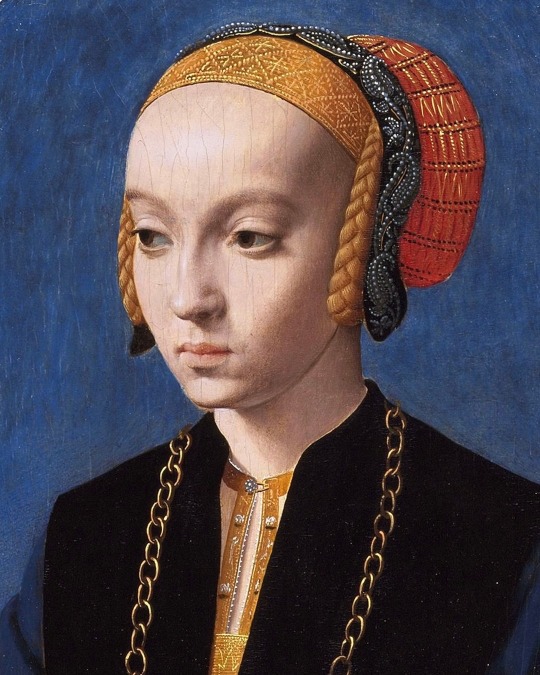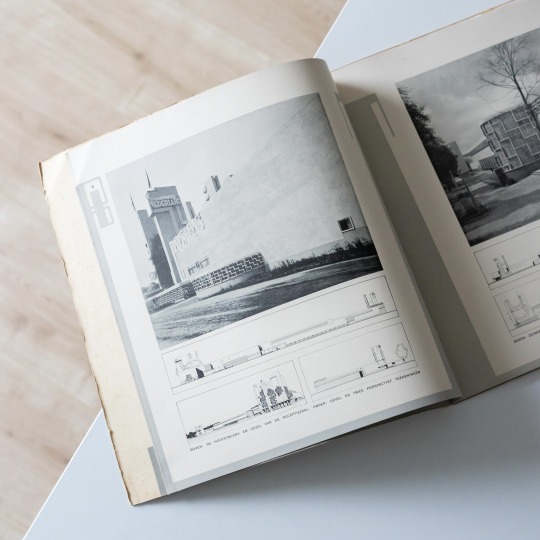#kundst
Text

Bartholomäus Bruyn de Oude (Ger. 1492-1555)
Elisabeth Bellinghausen (1538)
Part of a diptych, see this post.
169 notes
·
View notes
Note
Do you know of any similar blogs focusing on art but from other countries? I'm looking specifically for the Netherlands or countries from Scandinavia but I'm just willing to discover anything at this point. Also thanks for running this one. Your work is highly appreciated <33
unfortunately i do not :( it is my great wish that people from around the world get inspired by me and start similar blogs promoting the stuff from their own countries, but alas, i have yet to see something similar being created (srsly guys its fun and not as much work as you think, do ittt). privately i follow blogs like for example @/weepingwidar and @/kundst for insteresting artists from different countries, and you can also follow the tags... haven't seen any other tournaments happening yet tho :(
thank you for the kind words! as always, doing my best
11 notes
·
View notes
Text

Bartholomäus Bruyn de Oude - Elisabeth Bellinghausen (1538)
source: kundst
19 notes
·
View notes
Text


Jacobus Johannes Pieter „Bob“ Oud was one of the most prominent protagonists of Dutch modern architecture, a member of De Stijl and famously featured in Philip Johnson’s and Henry-Russell Hitchcock’s MoMA exhibition „The International Style: Architecture since 1922“ in 1932. With the Café de Unie in Rotterdam, the Hoek van Holland housing complex and the row houses at Weissenhof estate he designed significant buildings of the modern movement in the first half of the 20th century. After the Second World War and until his death in 1963 Oud collaborated with his son Hans, most importantly on the Nederlands Congressgebouw in Den Haag, who in 1984 published his PhD thesis on his father: „J.J.P. Oud, architect 1890-1963“, published by Nijgh en Van Ditmar, isn’t a son’s biography of his father but a chronological workup of Oud’s architectural oeuvre that digs deep into each building but less into the architect’s personality. This notwithstanding the reader understands that Oud was a somewhat stiff yet liberal character. The primary focus of the book lies on the manifold built and unbuilt projects of the architect that span more than half a century of Dutch architecture: with unexpected critical distance Hans Oud describes his father’s architecture and demonstrates how he approached each project as a step forward that entailed a great deal of variants regarding plans, facades, color schemes etc. etc. In view of this attention to detail one also senses the son’s admiration for his principled father.
In conclusion the book leaves the reader with a mixed impression: on the one hand Hans Oud provides a comprehensive overview of his father’s architectural oeuvre but on the other hand leaves out a great deal of context. Hence the 2001 publication „J.J.P. Oud - Poetic Functionalist“ still remains the essential volume on this important Dutch architect.
With many thanks to @kundst
#j.j.p. oud#architecture book#de stijl#architecture#netherlands#book#monograph#vintage book#dutch architecture
42 notes
·
View notes
Text

"Eating grapes in a striped room". 2023.
By Maeve an Klaveren. Dutch. b. 1977-
> Kundst
> Huariqueje.Tumblr
0 notes
Photo

Ein #Schmetterling oder doch eine #Person Der berühmte #Flügelschlag? #Kundst die zum Nachdenken anregt @bruno:weber_park #Dietikon APSC f/7.1-1/4000-iso1600-210mm Unterstütze mich: https://steadyhq.com/de/thespecialview/ (hier: Dietikon, Switzerland) https://www.instagram.com/p/ChMDLpxN0-I/?igshid=NGJjMDIxMWI=
3 notes
·
View notes
Photo

Paul Lorenz
CURVES AND ANGLES
#paul lorenz#digital+camera#contemporary photography#fine art#fine arts#gay artist#contemporary gay art#arte conceptual#kundst#art#arte
72 notes
·
View notes
Photo

Hieronymus Bosch (NL 1450-1516)
The Adoration of the Magi (1475)
Oil and gold on oak (71 x 56.5 cm)
5 notes
·
View notes
Photo

It becomes my weekly journal now📖 Ah. . . . . . #drawing #illustration #gouache #art #kundst #絵 (at Berlin, Germany) https://www.instagram.com/p/BtOQNDHgjL3/?utm_source=ig_tumblr_share&igshid=1os2vhicgqi5t
10 notes
·
View notes
Photo

source: @kundst
William Hoare (UK 1707-1792) Portrait of Aruba Suleiman Diallo (1733) Oil on canvas (76 x 63,5 cm)
Ayuba Suleiman Diallo was an educated man from a family of Muslim clerics in West Africa. In 1731 he was taken into slavery and sent to work on a plantation in America. By his own enterprise, and assisted by a series of spectacular strokes of fortune, Diallo arrived in London in 1733. Recognised as a deeply pious and educated man, in England Diallo mixed with high and intellectual society, was introduced at Court and was bought out of slavery by public subscription. Through the publication of his Memoirs in 1734, Diallo had an important and lasting impact on Britain’s understanding of West African culture, black identity and Islam. In the early years of the nineteenth-century, advocates of the abolition of slavery would cite Diallo as a key figure in asserting the moral rights and humanity of black people.
4 notes
·
View notes
Photo

Koen van den Broek (Be 1973) Frydlant (2003) Oil on canvas (120 x 180 cm)
Source: kundst
3 notes
·
View notes
Photo

kundst
Parvaneh Etemadi (Ir. 1947)
Adam and Eve (1965)
cement and oil on plywood (180 x 120 cm)
2 notes
·
View notes
Text

Picasso - Deux mains croissées (1921) thx to kundst
3 notes
·
View notes
Text


In the late 19th and early 20th century World’s Fairs were incredibly popular crowd pullers and an effective tool for nations to create their national „brand“. In 1930 the Belgian city of Antwerp hosted the „Exposition internationale coloniale, maritime et d'art flamand“ which, like its name suggests, focused on colonialism, the maritime and Flemish art. Besides, among others, Austria, Brazil, Germany and Spain also the Netherlands were present with an national pavilion designed by Hendricus Theodorus Wijdeveld.
The Dutch architecture and art magazine „Wendingen“, the mouthpiece of the architect association „Architectura et Amicitia“, in 1930 dedicated its third annual issue to the exhibition pavilion, highlighting both its architecture and the exhibition it housed. Coincidentally Hendrik Wijdeveld at that time also was the editor in chief of „Wendingen“ The cover page was designed by the graphic designer Willem Jacob Rozendaal.
In the pavilion the focal point lies on the promotion of the Rotterdam harbor, the Dutch landscape and the Dutch colonies while the fine arts only play a subordinate role in the self-display of the country. Around the different displays Wijdeveld designed an airy yet monumental pavilion that is very much in keeping with his Amsterdam School architecture: clean-cut volumes and pronounced massing but without the expressive details that can be found in the work of colleagues like Michel de Klerk.
A massive thank you goes to @kundst for providing me with this treasure!
#wendingen#dutch architecture#exhibition pavilion#architecture#netherlands#architecture magazine#amsterdam school
44 notes
·
View notes
Photo

kundst: Pamplona Bible, Navarre 1197Amiens, Bibliothèque... http://ift.tt/2sTJ8RY
1 note
·
View note
